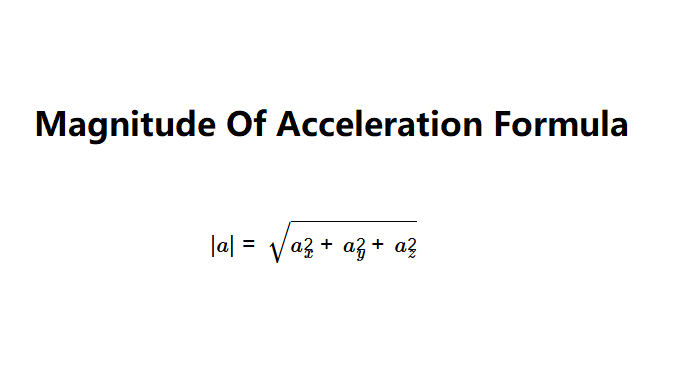 Home
Home
 Back
Back

Definition: This calculator computes the magnitude of the acceleration vector (\( |a| \)) based on its x-, y-, and z-components.
Purpose: It is used in physics and engineering to determine the total acceleration of an object in three-dimensional space, applicable in motion analysis and dynamics.
The calculator uses the relationship:
Where:
Explanation: Enter the x-, y-, and z-components of acceleration in the chosen units, and the calculator computes the magnitude of acceleration. Results are displayed with 5 decimal places, using scientific notation if the value exceeds 100,000 or is less than 0.0001. For default inputs (\( a_x = 2 \, \text{m/s}^2 \), \( a_y = 3 \, \text{m/s}^2 \), \( a_z = 4 \, \text{m/s}^2 \)), the calculated magnitude \( |a| \) is approximately 5.38516 m/s².
Details: Calculating the magnitude of acceleration is essential for understanding the overall motion of an object, aiding in the design of vehicles, spacecraft, and other systems subjected to complex motion.
How do I find the magnitude of acceleration?
Measure the x-, y-, and z-components of acceleration in meters/second². Compute the magnitude using the formula \( |a| = \sqrt{a_x^2 + a_y^2 + a_z^2} \). The result will be in meters/second².
What does the magnitude of acceleration represent?
The magnitude of acceleration represents the total acceleration of an object, regardless of direction, providing a scalar measure of how quickly its velocity is changing.
What is the formula for the magnitude of acceleration?
The formula for the magnitude of acceleration is \( |a| = \sqrt{a_x^2 + a_y^2 + a_z^2} \), where \( a_x \), \( a_y \), and \( a_z \) are the components of acceleration. The standard unit is meters/second² (m/s²).